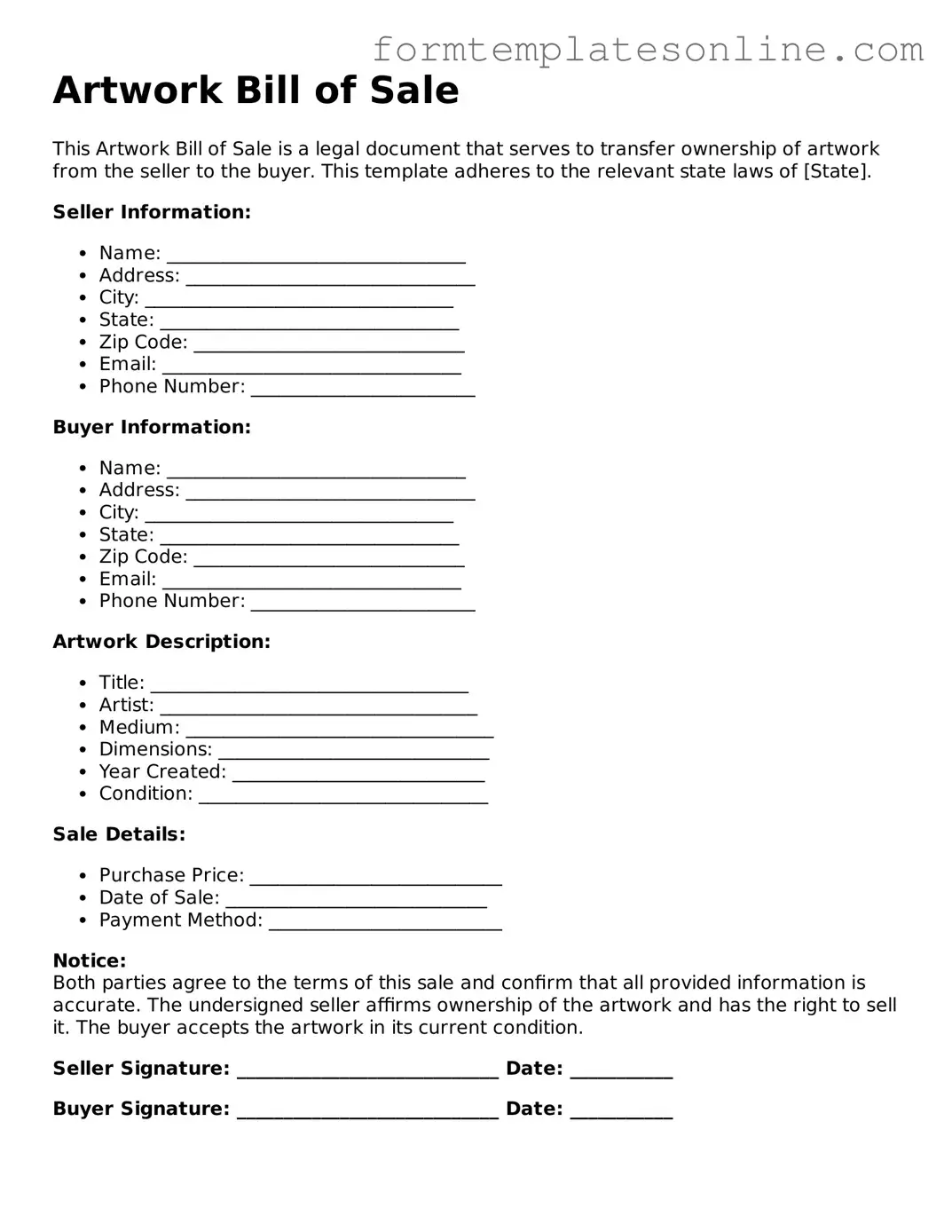What is an Artwork Bill of Sale form?
An Artwork Bill of Sale form is a legal document that serves as proof of the transfer of ownership of a piece of artwork from the seller to the buyer. This form outlines important details such as the description of the artwork, the sale price, and the names of both the buyer and the seller. It helps to protect both parties by documenting the transaction and ensuring clarity regarding the ownership of the artwork.
Why is it important to use an Artwork Bill of Sale?
Using an Artwork Bill of Sale is crucial for several reasons. First, it provides a clear record of the transaction, which can be essential for future reference or disputes. Second, it helps establish the authenticity of the artwork and can serve as evidence of its provenance. Lastly, having a formal document can facilitate insurance claims, should the artwork be lost or damaged after the sale.
What information should be included in the Artwork Bill of Sale?
An effective Artwork Bill of Sale should include specific details to ensure a smooth transaction. Key elements to include are the title of the artwork, the name of the artist, a description of the piece, the sale price, and the date of the sale. Additionally, both the buyer's and seller's contact information should be included, along with their signatures to validate the agreement. It may also be beneficial to note any conditions of the sale, such as whether the artwork is being sold "as is."
Can the Artwork Bill of Sale be modified after it is signed?
Once an Artwork Bill of Sale is signed by both parties, it generally becomes a binding agreement. Modifications can be made, but both parties must agree to the changes and sign the updated document. It’s best practice to keep a record of any amendments to ensure that all parties have a clear understanding of the terms. If significant changes are needed, it may be advisable to create a new Bill of Sale to avoid confusion.
